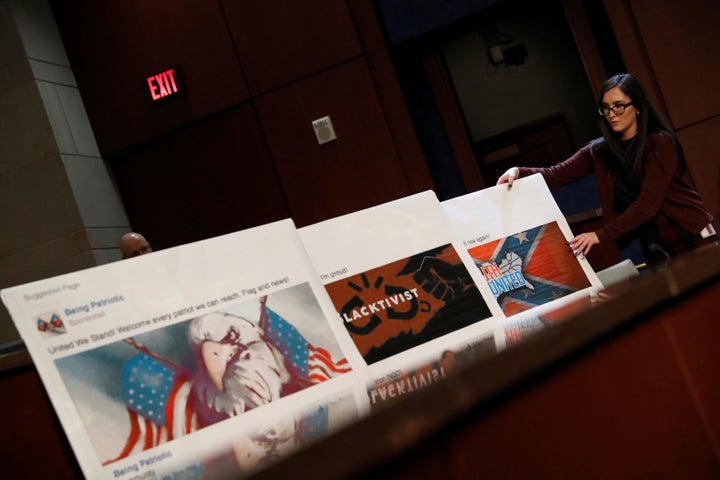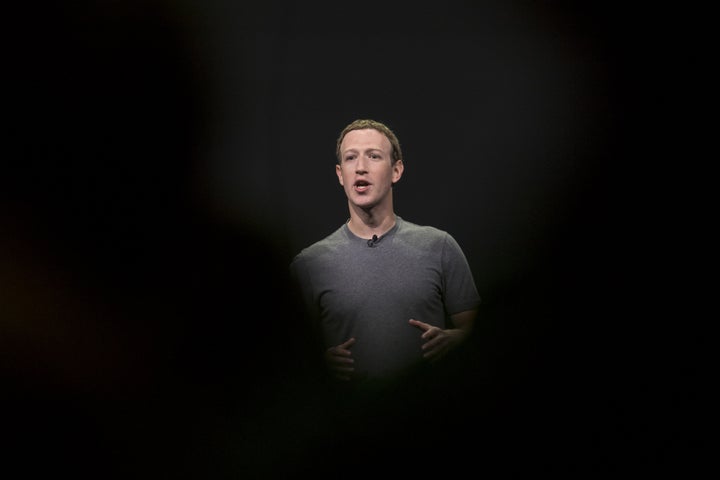The troll operation liked divisive, emotionally charged content because the social media platforms liked divisive, emotionally charged content. Culture-war stuff — issues of race and gender and identity in general, issues that got a rise out of people. Facebook and Twitter were and still are optimized to send traffic to posts about these subjects, and so the troll outfit optimized its content accordingly.
This was the story of Mic.com, one of the first online media startups to capitalize on left-wing millennial outrage culture. It went hard on social-justice issues and directed ire at everyone from manspreaders to Nazis. Clicky, empurpled headlines oversold conflict and outrage.
While the writers and reporters may have believed in the company’s mission of social justice, the site’s founders had actually stumbled backward into it. An exposé about Mic, published by The Outline in August, revealed that “Mic chanced upon the social justice narrative, discovered it was Facebook gold, and mined away.” One former staffer told The Outline that Mic learned you could “commodify people’s feelings about race and gender” for clicks earlier than most other online publications.
The founders of Mic were trolls in the standard internet sense. They tapped into strong feelings and sentiments they didn’t necessarily share, and thus they reverse-engineered a briefly successful media operation out of the algorithmic preferences of social media platforms like Facebook and Twitter.

In the runup to the 2016 election, the employees of Russia’s Internet Research Agency were trolls, too, tapping into strong feelings and sentiments they didn’t necessarily share, and reverse-engineering an occasionally successful political ratfucking operation out of the algorithmic preferences of social media platforms like Facebook and Twitter. This was Russia’s notorious troll farm, 13 of whose employees were indicted two weeks ago on charges that they illegally interfered in the 2016 election through fake social media accounts.
Here’s how Adrian Chen described the IRA for The New York Times in 2015:
Management was obsessed with statistics — page views, number of posts, a blog’s place on LiveJournal’s traffic charts — and team leaders compelled hard work through a system of bonuses and fines. “It was a very strong corporate feeling,” [former agency employee Ludmila] Savchuk says. Her schedule gave her two 12-hour days in a row, followed by two days off. Over those two shifts she had to meet a quota of five political posts, 10 nonpolitical posts and 150 to 200 comments on other workers’ posts.
And here’s how Adrianne Jeffries described Mic for The Outline:
Furthermore, Mic’s fixation on traffic bothered reporters, who were sick of being forced into reductive headlines and catering to an echo chamber while being told they were changing the world. “It’s like they know the right things to tell their staff, but at a certain point it starts to feel like gaslighting in the office,” said the former staffer who covered social justice issues. “I didn’t just want to know what my path forward was, I didn’t just want a raise. I wanted someone to stop bullshitting me. To tell me I was selling out and I was just writing for clicks, that would be one thing. But there was this ethos of, ‘you are doing important work. You are making a difference,’ when I wasn’t.”
The differences between the two operations scarcely need elaboration. Mic’s goals were the goals of any modern media startup: to attract venture capital and advertising dollars. Meanwhile, as Facebook’s vice president of advertising, Rob Goldman, explained on Twitter this month in the course of defending his own company: “The main goal of the Russian propaganda and misinformation effort is to divide America by using our institutions, like free speech and social media, against us. It has stoked fear and hatred amongst Americans. It is working incredibly well. We are quite divided as a nation.”

The United States is quite divided. But Americans didn’t need help from Russia to get there. What the Internet Research Agency did was enlist itself in the American culture war being waged across our social media platforms, with the platforms’ complicity if not outright encouragement.
The internet was supposed to be a democratizing force enabling individuals to express themselves and speak truth to power. And so it has been in many important ways. We all won Time Magazine’s Person of the Year, remember? But the monopolistic platforms on which people now spend most of their time are designed to privilege a certain kind of content that triggers the base emotions in our lizard brains. And they make it possible to troll and propagandize on a scale previously unimaginable.
Russian trolls used Facebook, Twitter and other social platforms exactly how they were meant to be used. They optimized the performance of their content across platforms to target specific issues that boosted their interactions with users and increased the distribution of their content. The influence campaign included managers who oversaw a graphics department, a data analytics team and search engine optimization experts.
Online media companies, similarly enabled by the media platforms’ mass surveillance of their users, employ entire departments to study what stories drive the most visitors. So do domestic political campaigns by candidates, super PACs, corporate front groups and billionaire-backed dark money nonprofits. And then they lean hard on whatever formula works.
What many media companies have found is that user engagement on social platforms is driven largely by emotionally loaded content. This isn’t anything new. “If it bleeds, it leads” was the phrase coined by journalist Eric Pooley in 1989 on the subject of TV news. What’s new is that online media’s distribution channels are limited to those provided by massive companies such as Facebook and Google, which have eaten up almost all new advertising dollars and reached economies of scale that make them unavoidable for media, politics and international ratfucking operations alike.
Algorithms are the new assignment editors, and media companies rise and fall and remake themselves altogether because of tweaks to seemingly insignificant protocols. When Google search was king, HuffPost optimized its headlines accordingly. (“What time is the Super Bowl?”) Now that Facebook reigns, outrage does, too — all across the media landscape. Stories that whip up anger, fear and outrage are commonly deployed to increase shares and readership.

Noble intentions often lie behind the outrage stories that media companies have found to be successful. Pointing out the racism, sexism and homophobia of powerful actors is good for readership and good for humanity, too. Boosting coverage of underrepresented communities likewise boosts their social and political standing. But sometimes media companies stumble upon a traffic bonanza and reverse-engineer stories that they know will perform well.
Mic, in The Outline’s telling, was just such a case. Long before the site made a much-mocked “pivot to video” — more lambs sacrificed to the gods of Facebook — news writers there were often provided with topics and keywords they were ordered to use in the hopes of goosing attention on social media sites. The owners pushed the production of divisive content not because they believed in the cause, although much of the staff did, but because it helped them sell the company to investors.
Another former staffer told The Outline: “A lot of the videos that we would publish would be like, ‘Here is this racist person doing a racist thing in this nondescript southern city somewhere.’ There wouldn’t be any reporting or story around it, just, ‘Look at this person being racist, wow what a terrible racist.’”
This happened all over media, even at legacy publications. Franklin Foer, the former editor-in-chief of The New Republic, wrote in his book World Without Mind: The Existential Threat of Big Tech about the efforts of then-owner Chris Hughes, a former Facebook executive, to fit his magazine’s coverage to online trends. Writers would be judged on their traffic stats and pressed to produce “snackable content” that could easily be shared across social platforms. This often included pointlessly divisive outrages of the day.
“We simply had to mimic the rest of the Internet ― write about the same outrage as everyone else, jump on the same topic of the moment,” Foer writes.
The design of the platforms encouraged media companies to share the same outrage material.
Remember the #BoycottStarbucks hashtag? Conservatives made that go viral after the coffee company announced a plan to hire refugees in response to Trump’s Muslim ban executive order in January 2017. Many news sites all wrote up the same story, including many of the same tweets from the same outraged conservative accounts. It was a perfect story. Readers could agree with the outraged or be outraged by their outrage.
Fox News included two tweets from @Pamela_Moore13 in a story about the controversy. “Hiring 10k refugees makes liberals feel warm BUT we have homeless vets that need those jobs. #BoycottStarbucks #ReasonsToProtest #MuslimBan,” @Pamela_Moore13 wrote.
Her other tweet said: “I would rather take care of TEN homeless US Veterans, than 50,000 migrants/illegal aliens How About You? #BoycottStarbucks #ReasonsToProtest.”
The Los Angeles Times, The Baltimore Sun, HuffPost Mexico and Vice all quoted the same tweets by @Pamela_Moore13. So did numerous conservative outrage sites. The official Starbucks Twitter account even responded to her suggestion to hire veterans instead of refugees, saying, “We’re committed to both ― we also set a goal to hire 10,000 veterans by 2018 and we’re very close to reaching it.”
Months later, we found out that @Pamela_Moore13 was a Russian troll account created by the Internet Research Agency. The ratfuckers and internet media, together at last. Content was a political dirty trick, and the dirty trick was content. I believe that’s what they call synergy.
